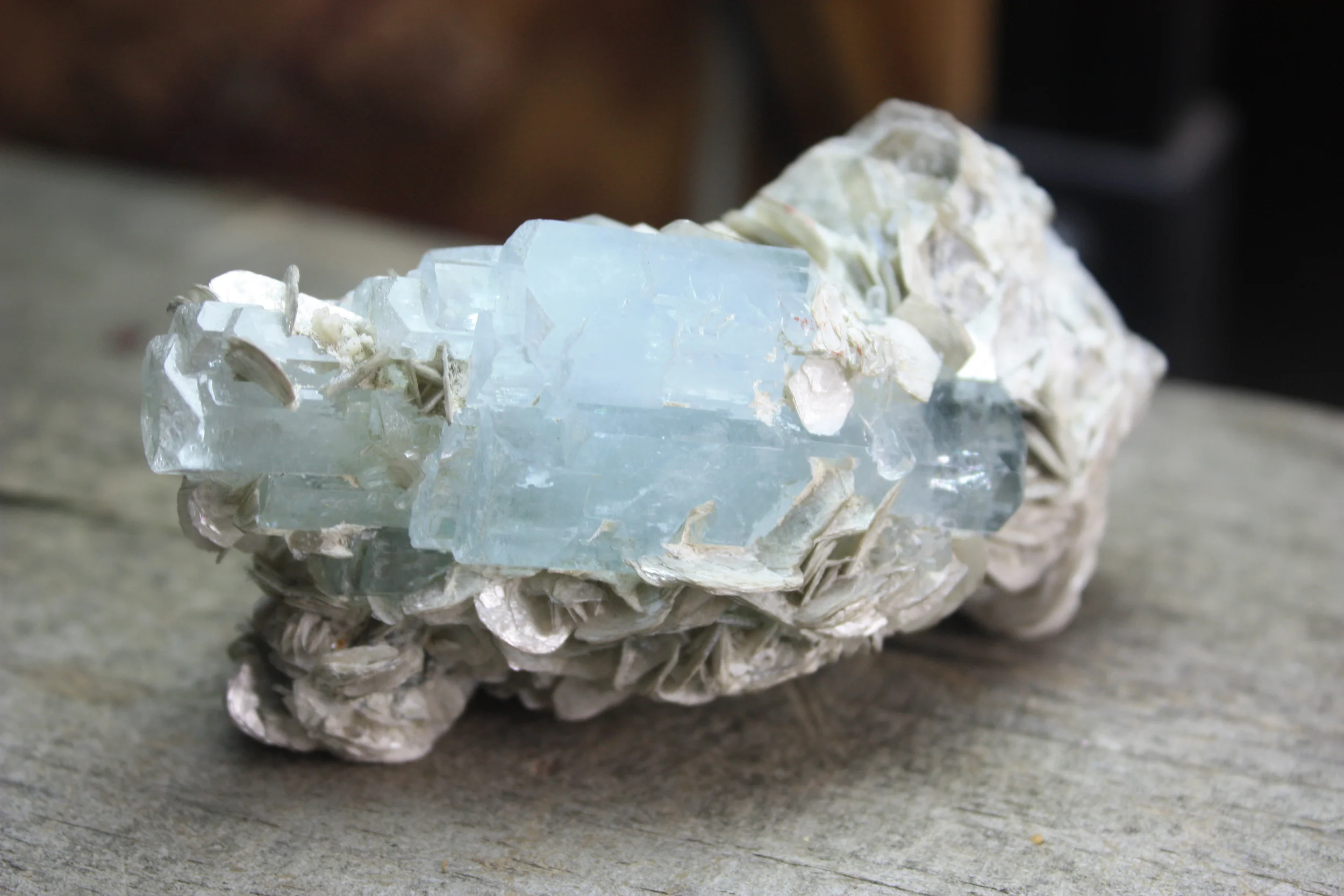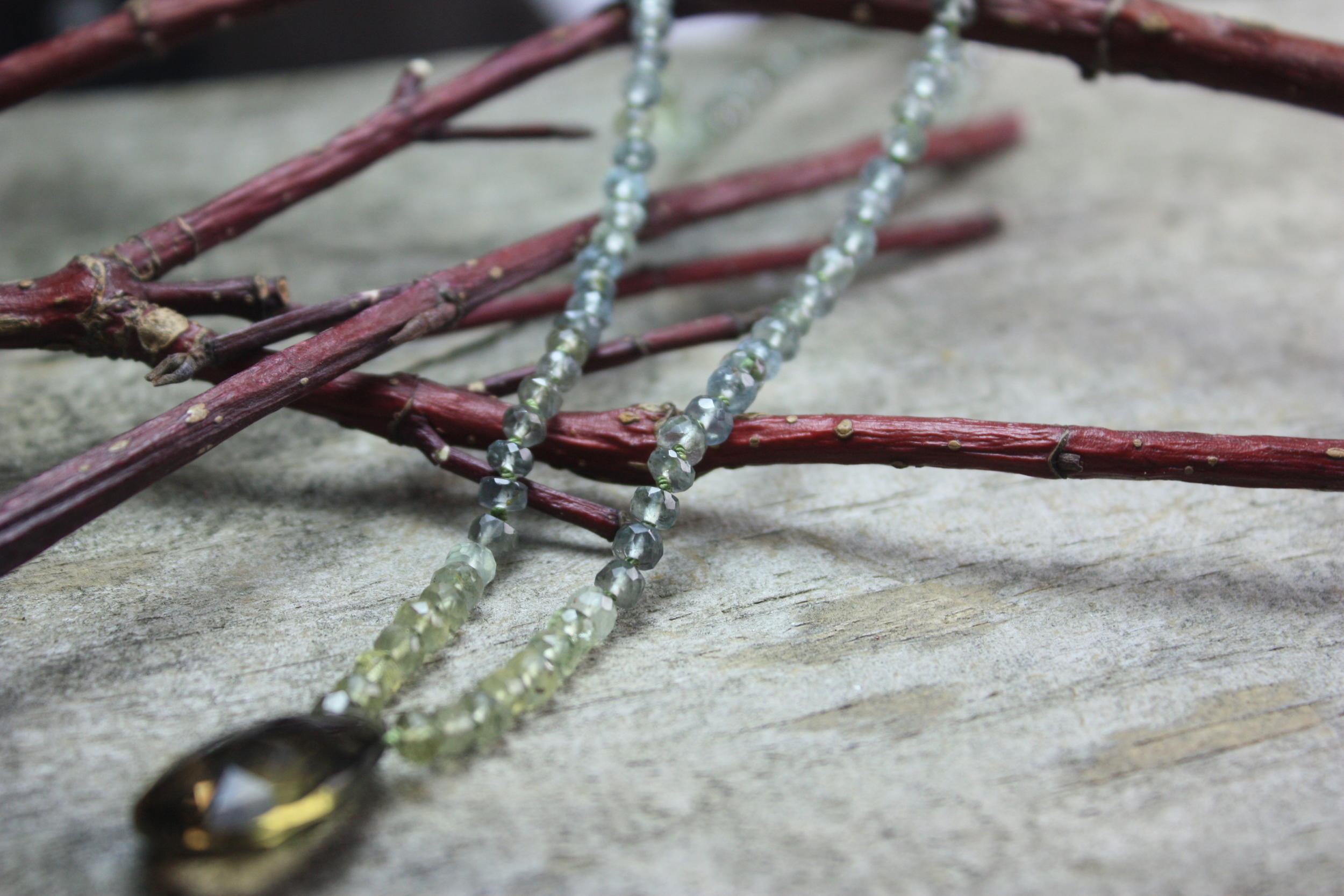Aquamarine is a type of beryl, specifically beryllium aluminum silicate. These crystals are lent their blue and green colors by the presence of iron in the chemical mix, and are usually hexagonal minerals occurring as transparent to translucent prisms in igneous and metamorphic rocks. Along with emeralds, aquamarines are valued as the gems of the beryl family.
Aquamarines range in color from an almost colorless pale blue to blue-green or teal and even yellow. They are often heat-treated to create a permanent true-blue color in the crystals; though most collectors and connoisseurs especially treasure the deeply, beautifully colored crystals in their natural state, there are certainly many who appreciate the vibrant colors that heat treating can lend. Crystals are usually cut into faceted shapes, when it’s cut into a cabochon it can display “asterism” like a star sapphire or ruby or tigers-eye might. It is hard – a 7.5-8 on the Mohs scale – and gets its name from Latin words meaning water and sea. The crystals are mined in Brazil, Kenya, Nigeria, Madagascar, Zambia, Tanzania, Sri Lanka, Pakistan, Afghanistan and Russia. While Brazil claims most of the world’s market and a reputation for some of the most beautifully colored stones, African countries including Namibia, Nigeria, Zambia and Zimbabwe are famous for untreated deep blue color notable in even in the smallest cut stones (right now in the shop we’ve got some beautiful Namibian crystals, some formed with black tourmaline alongside, that are just gorgeous).
Metaphysical: The classic birthstone for March, aquamarine has long been believed to endow the wearer with foresight, courage, and happiness. It is said to increase intelligence and make one youthful. As a healing stone, it is said to be effective as a treatment for anxiety and in the Middle Ages it was thought that aquamarine would reduce the effect of poisons. A legend says that sailors wore aquamarine gemstones to keep them safe and prevent seasickness. It’s the planetary stone for Pisces, the stone associated with the sun sign for Scorpio, and in antiquity was the October birthstone in the ancient Arabic, Hebrew, and Roman cultures.


